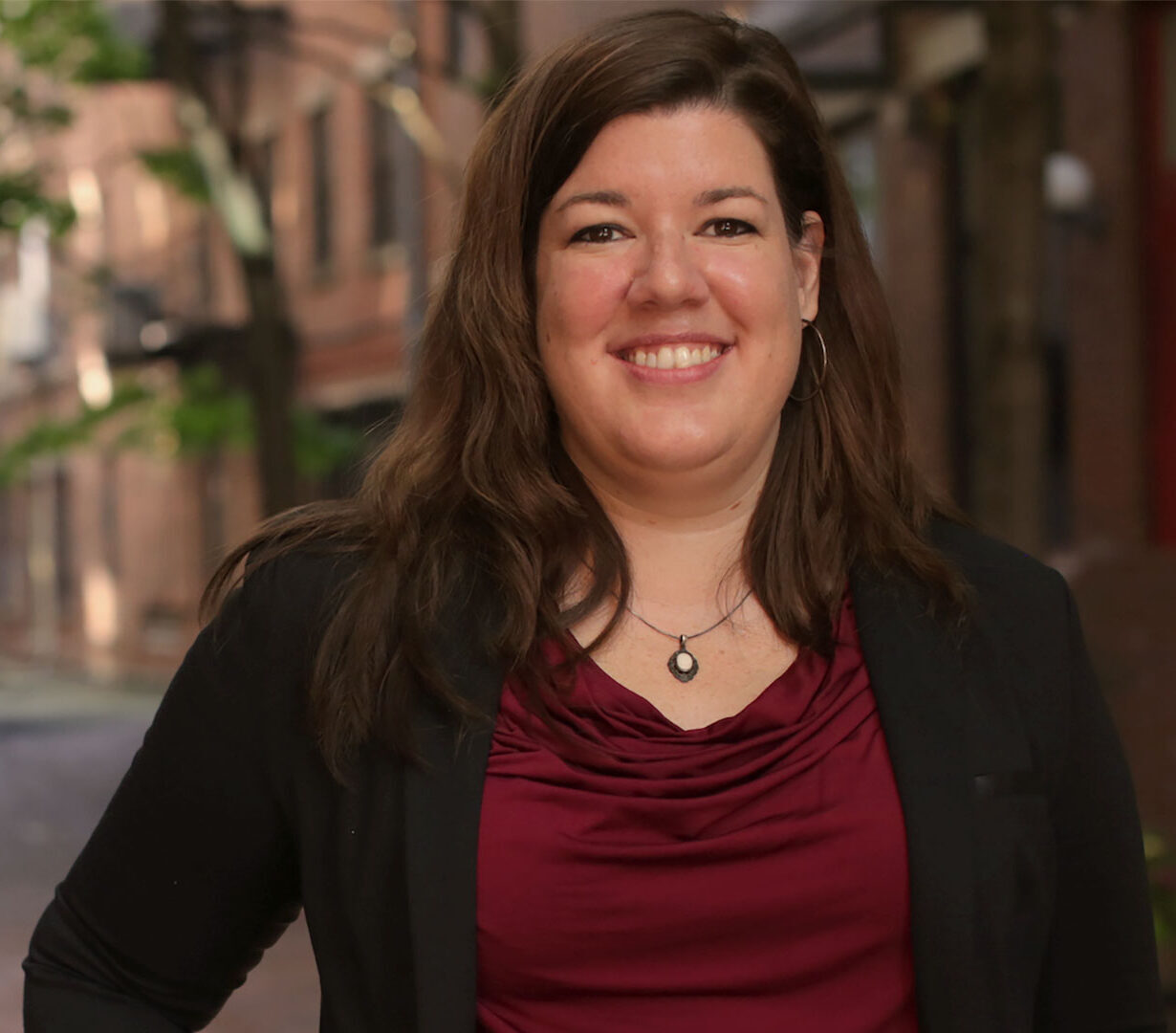On this page
Our early careers are typically a time for exploration and discovery. We try out different jobs, pursue education or training in areas of interest, and narrow where we want to focus our skills, talents, and interests. You are especially fortunate if you’ve found a job, company, or career where you can envision yourself long term.
But what if you’ve been in a career for 10 or 15 years that just doesn’t seem to fit you anymore? It might be time to make a career transition.
If you’re contemplating a career change in your 30s, you’re likely at an age where you’ve gained enough self-awareness and clarity about your personal and professional goals that you more clearly see where you want to go in the future.
And you’re not alone, as 58 percent of workers in 2023 said they planned to make a major job change in 2024, according to a 2023 survey conducted by personal finance news source GoBankingRates.
However, making that transition to a new career from a current — and possibly stable — one can be daunting. But it can also be exciting and rewarding. To learn more about how to take those next steps, Amanda C. Peters, director of career advising & programming at Harvard Extension School, offers advice and insights on making a career change in your 30s.
Meet Our Expert

Amanda Peters
Director of Career Advising & Programming, Harvard Extension School
How Do I Know It’s Time to Change Careers?
Recognizing that it’s time for a career change may be as simple as your gut telling you you’re ready for something new. But Peters suggests that there are a few other signs to look for:
- You’re losing interest in the work or career path you’re currently in, feel stagnant in your career, or have started to feel burned out.
- Your values or priorities have changed.
- You’re curious about a new field and want to explore it.
- Your interest in a different topic area has grown so much that you’ve started a side hustle in that area.
- You recently completed a degree or coursework in a new field and now want to transition.
- You simply long for a fresh start.
When you start to see the indicators, Peters advises asking yourself some questions.
“Really think about what you like to spend your day doing,” she says. “Think about the impact your work is making. Meaning makes a big difference to a lot of people and what meaning is in a job is different to everyone. So if people aren’t finding those things in their job, those might be some indicators that they want to look at a change.”
Of those who do make a job or career change, more than half say they’re earning more money, finding more growth opportunities, experiencing a better work-life balance, and benefiting from more flexible work schedules, according to the Pew Research Center.
How to Successfully Transition Careers in Your 30s
A career change often means starting over in a new field, perhaps even in a new location, and gaining the training and skills required in that new field. A career change won’t happen overnight. But once you realize that it may be time to change careers, here are some ways to begin your journey.
Step 1: Set Aside Time for Self-Reflection
The first step is evaluating why you want to make a career change and what you envision as your new path. Peters suggests asking the following questions to guide your planning:
- What impact do you want to make in your work?
- What skills do you want to spend your time using?
- What are particular topic areas you’re passionate about?
- What kind of environment do you want to work in?
- What other priorities do you have (such as location or salary)?
However, figuring out your goals and next steps won’t happen without taking the time to think through what you want.
“Sometimes the smallest step, and the first step, is setting time aside,” says Peters. “Just doing something for a really short amount of time, like starting to explore your own interests, can help you break through that wall of getting started.”
Step 2: Start Exploring and Make a Plan
Next, make a plan for how you’re going to explore those new career options. Peters suggests taking “microsteps that are an ongoing combination of continued exploration, trying things out, and starting to get to know people in the field.”
By talking to others who have been on a similar career journey as you hope to take, you can “learn what the steps are to get there, if that’s where you want to go,” she adds.
You likely already have an idea of which career you want to transition into based on your gut feeling and self-reflection process.
Now, take the time to research more details about that new career path, like industry trends, job growth, and the skills required for different roles in the new field you’re exploring. If you’re unsure of a field to pursue, look at how your current skills and interests fit into some of the fastest-growing industries, like AI, healthcare, IT, green energy, and more.

I’ve had a lifelong passion for the environment and sustainability issues. But, before leaving the NHL, I wanted to back that up with some formal education. When I signed up for that first class, I knew in my gut it was a big moment.
Step 3: Find Support
A career change is a big transition that can take a lot of time and effort. Having people cheering you on can make a big difference.
“It’s helpful to find support, whether it be a friend who’s also exploring, someone from a school you graduated from who’s part of a mentor network, or a contact from a professional association or your local community,” Peters says. “Finding someone you can share information with who can be there to support you is really the biggest key.”
Step 4: Take Action With “Microsteps”
Now it’s time to take actionable steps towards making that career change — even if you work full time with a current employer. Some of these microsteps might include:
- Take a class to explore a new career field and connect with an instructor who has expertise in that field. Class projects can give you the opportunity to experience the work and add to your portfolio for future job applications.
- Talk to people in your potential new field. If you work full time, start at your current company. “Identify who in your professional world or in your workplace is already doing this kind of work and talk to them,” Peters says. “Write down everyone you know and talk to them for information, advice, and referrals to other people.”
- Take on a stretch assignment in your current role. “For some organizations, that’s more possible than others, and there might be something that you can do related to your interest in your career change,” says Peters.
- Complete a personal project in your new field of interest in your spare time. This could also involve picking up freelance work in your new area of interest.
- Volunteer. “Getting involved in professional associations can also be a way to stretch even within your own profession,” says Peters.
Step 5: Update Your Resume and LinkedIn Profile
To prepare for a new job hunt, take some time to update your resume and your LinkedIn profile to better position yourself as you make your career change. Include any new relevant assignments, projects, coursework, or volunteer positions as part of the steps you’re taking in your new career.
Also, your past experience in a different field doesn’t have to hinder your future job search. Return to past positions in your resume and LinkedIn profile and rewrite your summaries to showcase any transferable skills or accomplishments that you will also need in your new career.
For example, if you previously worked in higher education administration and want to move into marketing for technology companies, highlighting your project management, problem-solving, and communication skills can help you stand out despite moving into a different field.
Finally, prioritize creating a custom cover letter for every role you apply to. This will allow you to highlight your transferable skills and give a future employer context around your career change.
How I Unexpectedly Changed My Career

The Benefit of Maturity in Switching Careers
Those making a career change in their thirties may worry that they’re behind or concerned that they’re too old to make this kind of change. However, those who have a decade or more of work experience have many benefits over those just starting out in their career.
Peters says older career changers simply “know more about themselves. Sometimes they’re not aware of how much they know about themselves.” Peters offers further questions to ask that can help clarify a career change, including:
- What have I enjoyed in the past?
- What do I like to spend my time doing?
- How do I want my life as a whole to look?
- What matters to me right now, and how much am I living it?
Older career changers, Peters says, “are able to answer a lot of these things from experience, so they don’t need to do all the self-assessments. Even those are often confirmation of what they already know.”
Those who have been working for a while have honed foundational skills or abilities that can be transferred from job to job. “The experience and the skills they’ve already gained, including the experience working with people and communicating, is really important. They can also think big picture and see how things connect together,” says Peters.
Older career changers tend to have a bigger network to draw from as they make a transition. “They know more people. Don’t assume that the people you know from one area won’t know anyone in another area. I think you’ll be pleasantly surprised,” says Peters.
How to Overcome Career Challenges
Making a career change in your thirties can set your life on a happier and healthier trajectory. But it’s certainly not easy and includes changing your skills, focus, and mindset. Here are some common challenges to be aware of as you set out.
Don’t Change Too Much at Once
One challenge that can trip up career changers is attempting to change everything all at once.
“Often, it’s easier to switch one thing at a time rather than three things at a time,” says Peters. “For example, if you are going to switch roles, it can be easier to stay within the same location and industry. Switching more than one thing at once and trying to leave everything from the past behind is often the biggest challenge that people face.
Additionally, set your expectations around the title and classification of a new job in your new chosen career. Since you’ll be learning an entirely new field, it’s unlikely that you’ll be hired for a more senior position than where you are currently — for example, going from a manager in one field to a director in another. It’s better to look for ways to make lateral moves, or moves at the same employment level, to start with, e.g., going from a manager in one department to a manager in another. This can often be a lot easier to do in the same company as well. If you’re looking to leave your current company and move to a different one, expect that you may need to start at a lower position simply due to lack of experience. But you can always work your way back up.
Have a Positive Mindset for Change
Make sure that the wrong mindset doesn’t hinder or stop your progress as well. “I encourage people to have an exploration mindset all the time,” Peters says. “If you’re always curious, you’re always asking people questions, you’re always asking for information, for advice. Those questions will be helpful both in building connections, which you should be doing every day, but also in helping you follow a trail of your own interests.”
Make a Financial Plan
Another consideration when changing careers is how your income will change. “Do you know what you’re getting into if you’re going to make a career change? Know that sometimes your salary might go down because of the field or the location, so you have to be aware of that too and decide what you’re willing to switch off,” Peters says.
Create a budget that you follow, and understand your financial needs for the foreseeable future. This can help you better plan for how much income you’ll need and decide which risks to take in your upcoming career change and job search.
Be Realistic About the Change
Finally, assess whether this career change is possible for you.
“There are always going to be some jobs that have barriers, big barriers that you can’t get over — like you can’t pass a physical. We’ve had that with people wanting to go into the military, or you have to go to med school, and you just can’t do it,” Peters says. “You do need to evaluate that when you’re looking at your options.”
How to Leverage Education on Your Journey

My courses at Harvard instilled in me the confidence to differentiate myself — and they undeniably did; I found myself working in the cybersecurity field even before completing my certificate!
You can start your career change by exploring a new field of interest at Harvard Extension School (HES) by taking a class or pursuing a certificate in a new field. At HES, the average age of a certificate student is 36, and 78 percent work full time while pursuing a certificate. Many students who earn graduate certificates also pursue a master’s degree by taking courses that fulfill the requirements for each program.
Start Your New Career Journey Today!
If you’re starting to get restless in your current role or workplace and have a different vision for what you want your future to be, a career change may be the next best step for you.
By determining what you want your future to look like and how to get there, you can start taking microsteps forward to gain the skills, knowledge, connections, and confidence to make that career transition a success.


